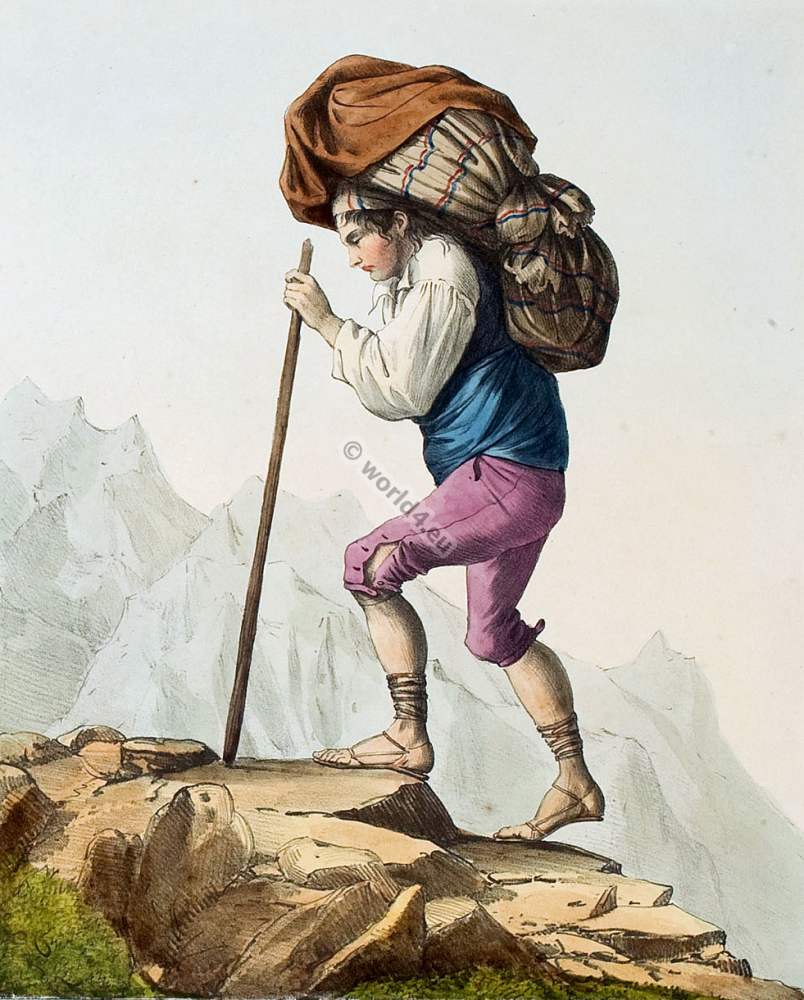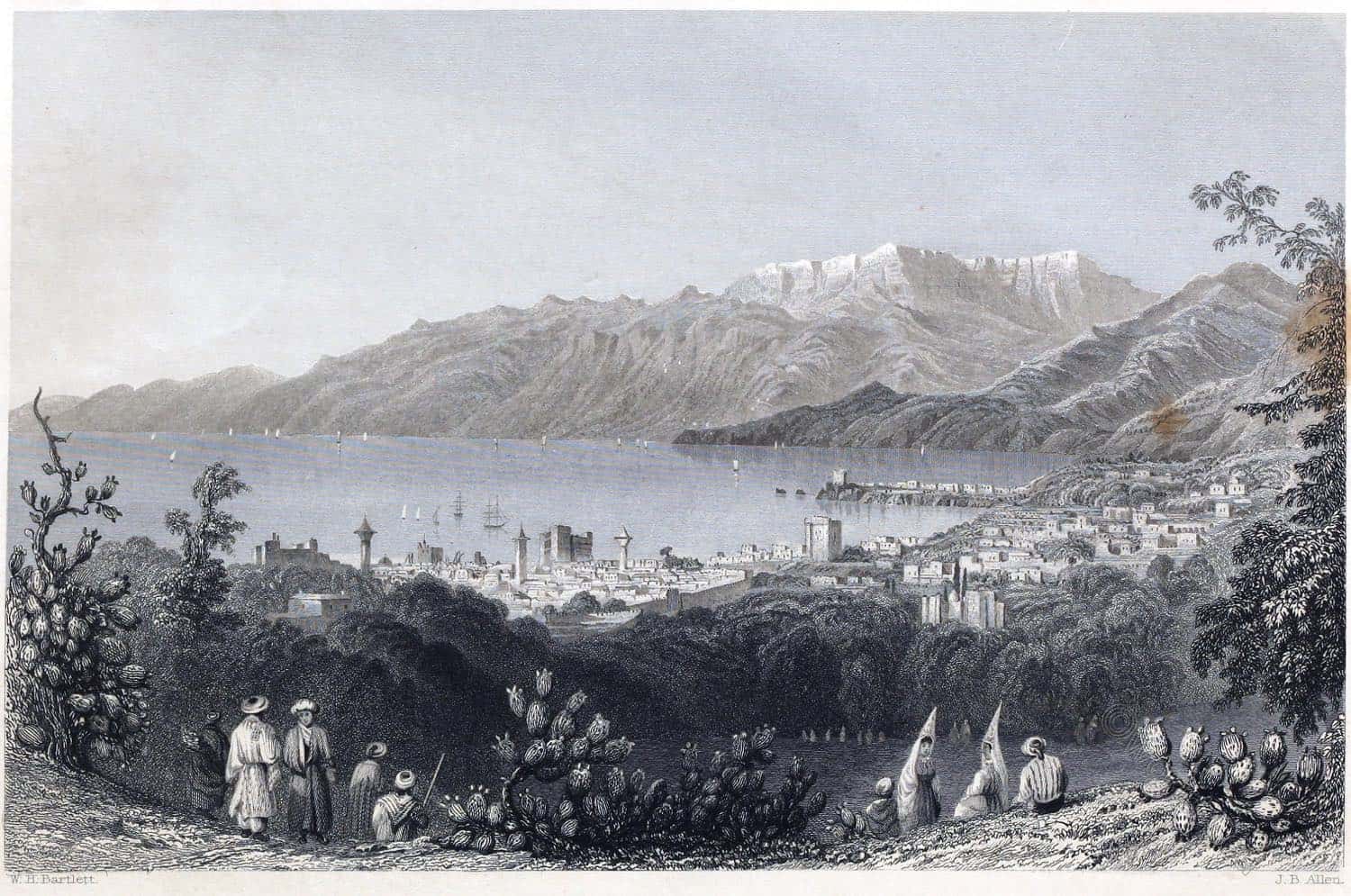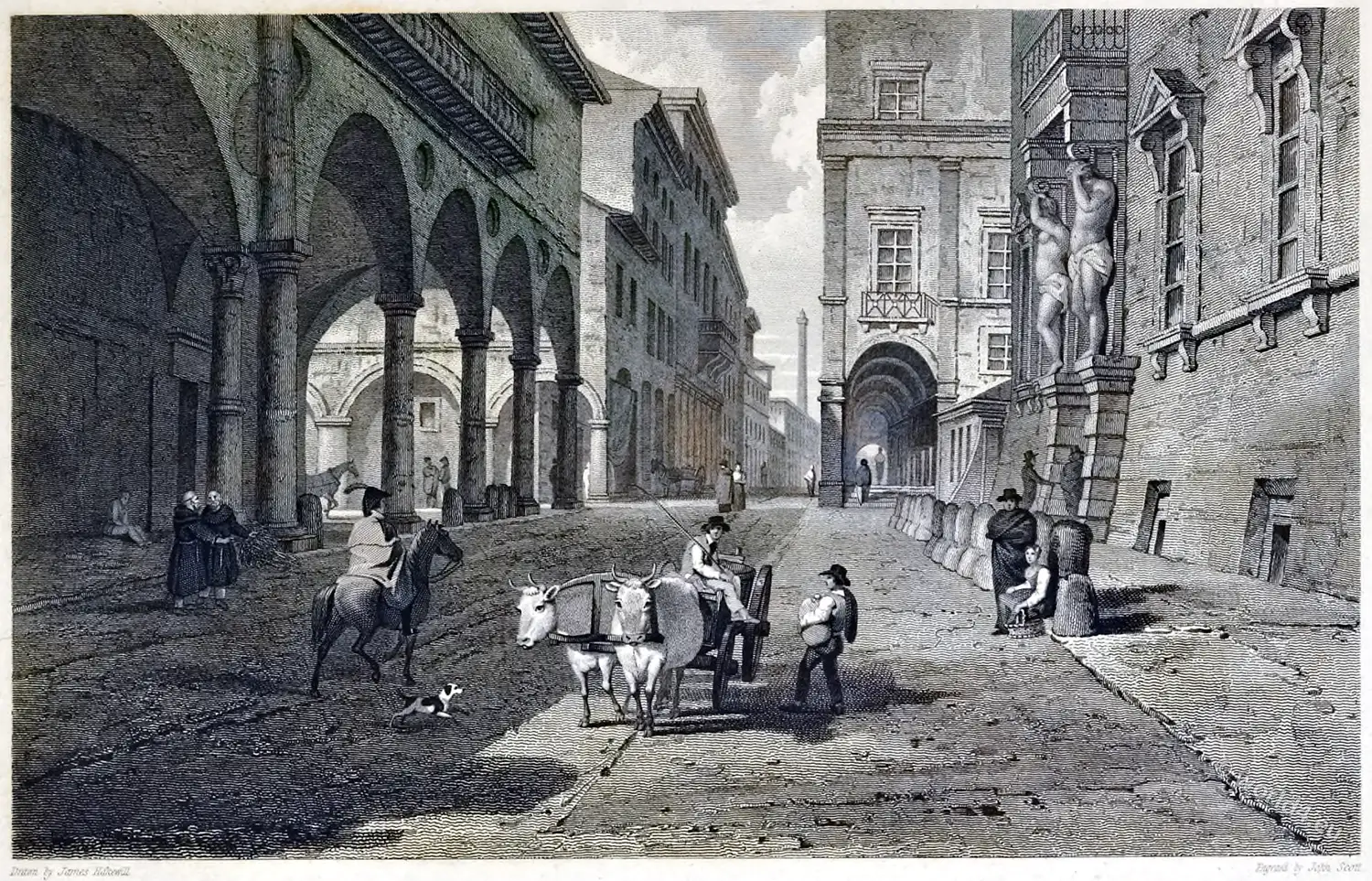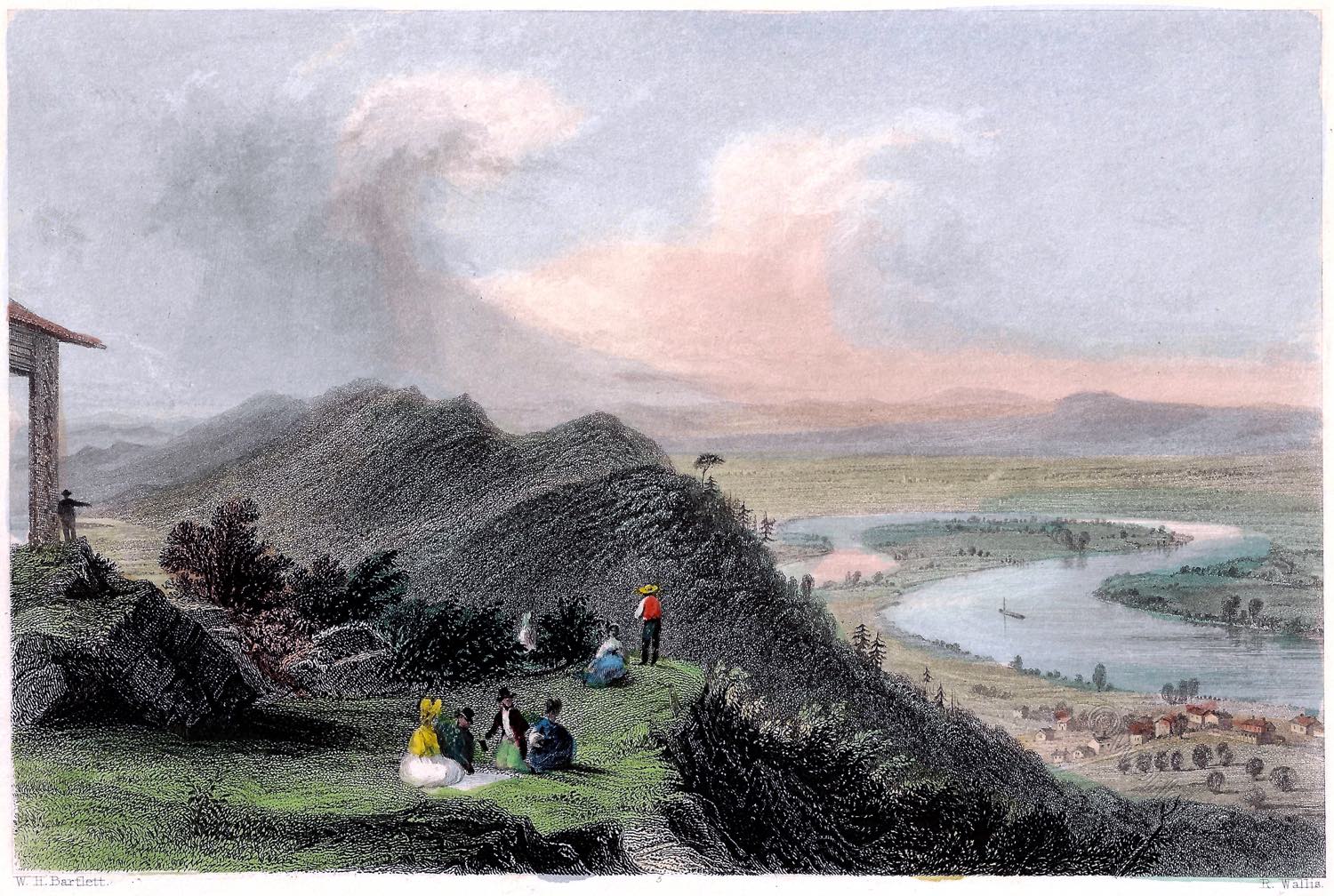VIEW FROM SPRING BANK, NEAR PORT ANTONIO.
Spring Bank was, at the time this view was taken, the property and residence of John Steel, Esq. It is situated at an immense elevation, about three miles south-westward of Port Antonio, and commands the most extensive and varied landscape scenery. This view, which is terminated southerly by some of the highest of the Blue Mountains, includes in the valley, along which the Rio Grande has its impetuous course, the Golden Vale and Seaman’s Valley estates, with some small portions of Stanton Harcourt and Hope estates.
Golden Vale, about five miles in the interior from Port Antonio, contains about 250 acres of level cane-field above and below the works, and about as much more bottom land, not so convenient for canes, which is chiefly in pasturage, with a very large extent of hilly and mountainous land to the south-westward, in pasturage, provisions, ruinate and wood. There are on the estates 500 negroes, 50 mules, and 300 head of cattle. Golden Vale was settled by the late George Paplay, Esq. about the year 1750, and became afterwards the property of Greenwich Hospital, from which it was purchased in 1811 by Alexander Kinloch and John Steel, Esqrs. with only 140 negroes, which have been brought up by subsequent purchases to their present number. Its annual crops are about 300 hogsheads of sugar, and about half that number of puncheons of rum.— William Lambie, Esq. attorney.
Seaman’s Valley is said to derive its name from the destruction of a party of our seamen by the Maroons. It is about ten miles from Port Antonio, and contains 1693 acres, of which 18? are in canes, 158 in guinea grass and pastures, the remainder in provision grounds, wood-lands, river courses, &c. The cane-land is loamy and productive, yielding in most instances two hogsheads per acre. Seaman’s Valley was for many years in the possession of Messrs. Daniel and Richard Shaw, from whom it passed in the year 1813 to Messrs. Gray, Whitworth and Gillbee, merchants of London, with 172 negroes; to this strength an addition has since been made, and there are now 291 on the estate.— Maurice Jones, Esq. attorney.
At the head of the Valley is Moor Town, one of the stations of the Maroons. It contains 80 men, 127 women, and 202 children, under the superintendence of George Fuller, Esq. The elevation of the Blue Mountains, according to the observations of Dr. Cowan of Falmouth, is as follows: — Manchester Rest, 5,050; East Peak, 5,670; North Peak, 5,900; West Peak, 5,680 feet above the sea.
Source: A picturesque tour of the island of Jamaica by James Hakewill. London: Hurst and Robinson, 1825.
Discover more from World4 Costume Culture History
Subscribe to get the latest posts sent to your email.







